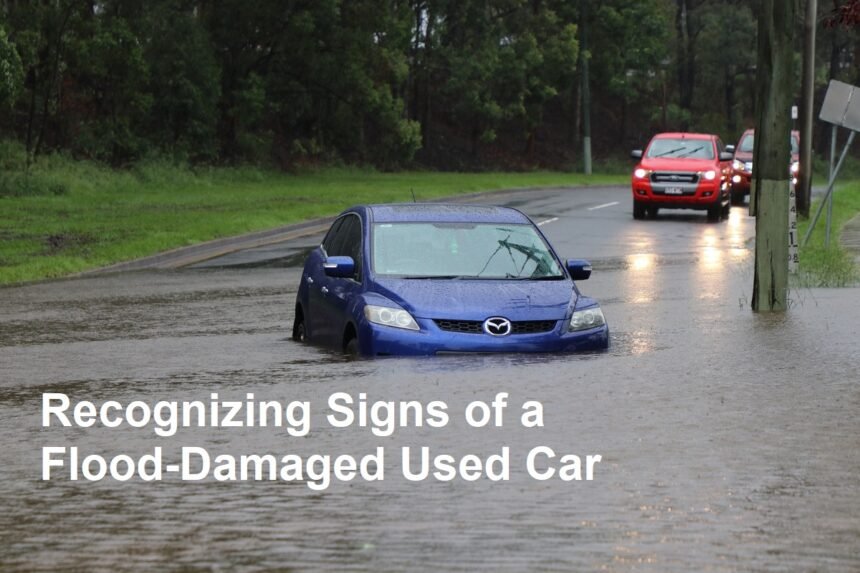Introducing
Buying a used car can be an excellent way to get a reliable vehicle at a lower cost. However, not all used cars are in perfect condition, and some may have hidden damages that are not immediately visible. One of the most serious issues in used cars is flood damage. Flood-damaged vehicles can pose safety risks and lead to costly repairs. Therefore, it is essential for buyers to know the signs of a flood-damaged used car to make an informed purchase. In this article, we will discuss the key signs that indicate a used car may have been submerged in floodwaters.
1. Unusual Odor
One of the most common indicators of flood damage is a persistent, musty odor that smells of mold or mildew. Floodwaters often leave behind a damp environment that fosters mold growth. If the car smells like mildew even after cleaning, it could be a sign that water has seeped into the interior, and mold is present in hidden areas such as carpets, seats, or the air conditioning system.
2. Inconsistent or Poor Interior Condition
Inspect the interior thoroughly for any signs of water damage. Look for warped or swollen door panels, dashboard, or seats. Water can cause the materials to expand or warp. Additionally, check for rusty or corroded metal parts underneath the seats or within the trunk. If the upholstery appears to be recently cleaned or replaced, it might be an attempt to cover up flood damage.
3. Malfunctioning Electrical Components
Floodwaters can severely damage a vehicle’s electrical system. Flickering or non-functional power windows, door locks, lights, or dashboard gauges are common symptoms. If the electrical components seem unreliable or behave abnormally, it could indicate water has infiltrated the wiring and electronic modules. Also, if the car’s stereo, GPS, or other electronics are not working properly or have been replaced with unfamiliar devices, it warrants further investigation.
4. Water Lines or Muddy Residue
Inspect the interior and engine bay for visible water lines or muddy residues, which could indicate that the vehicle has been submerged. Water lines often leave a ring or watermark on door panels, seats, or underneath the dashboard. Similarly, muddy sediments in areas that are usually clean could be evidence of floodwaters.
5. Rust and Corrosion
Flooded vehicles are prone to rust and corrosion, especially in areas that are not typically exposed to water. Examine the undercarriage, brake lines, and wheel wells for excessive rust. Rust spots may be present even in newer vehicles, and severe corrosion might weaken structural components, making the vehicle unsafe.
6. Check Vehicle History Reports
Obtaining a vehicle history report is an essential step when purchasing a used car. These reports can reveal if the car has been declared a total loss or has been involved in flooding incidents reported to authorities. Services like Carfax or AutoCheck provide detailed histories that include insurance claims, previous accidents, and title statuses. If the report indicates flood damage or previous salvage title, it is best to proceed with caution or avoid the vehicle altogether.
7. Mechanical Issues
Flood-damaged cars often experience engine problems or abnormal oil conditions. Check the engine oil for a milky appearance, which suggests water contamination. Difficulties starting the engine, poor acceleration, or unusual noises can also be red flags. A professional inspection by a trusted mechanic can help identify internal damages caused by flooding.
8. Be Wary of Repainted or Replaced Parts
Flood damage can lead to repainting or replacing parts to mask the damage. Look for inconsistencies in paint color or texture, especially around doors, fenders, and the engine bay. Unusual welds or repairs could indicate that parts have been replaced due to water damage.
Conclusion
Flood-damaged vehicles can be tricky to identify, as some damages are hidden or disguised. Still, paying close attention to odors, interior condition, electrical functionality, rust, and other signs can help detect possible flood history. Always conduct a thorough inspection, request a vehicle history report, and consider getting a professional mechanic’s opinion before making a purchase. Being vigilant and cautious can save you from costly repairs and ensure you invest in a safe, reliable vehicle.












